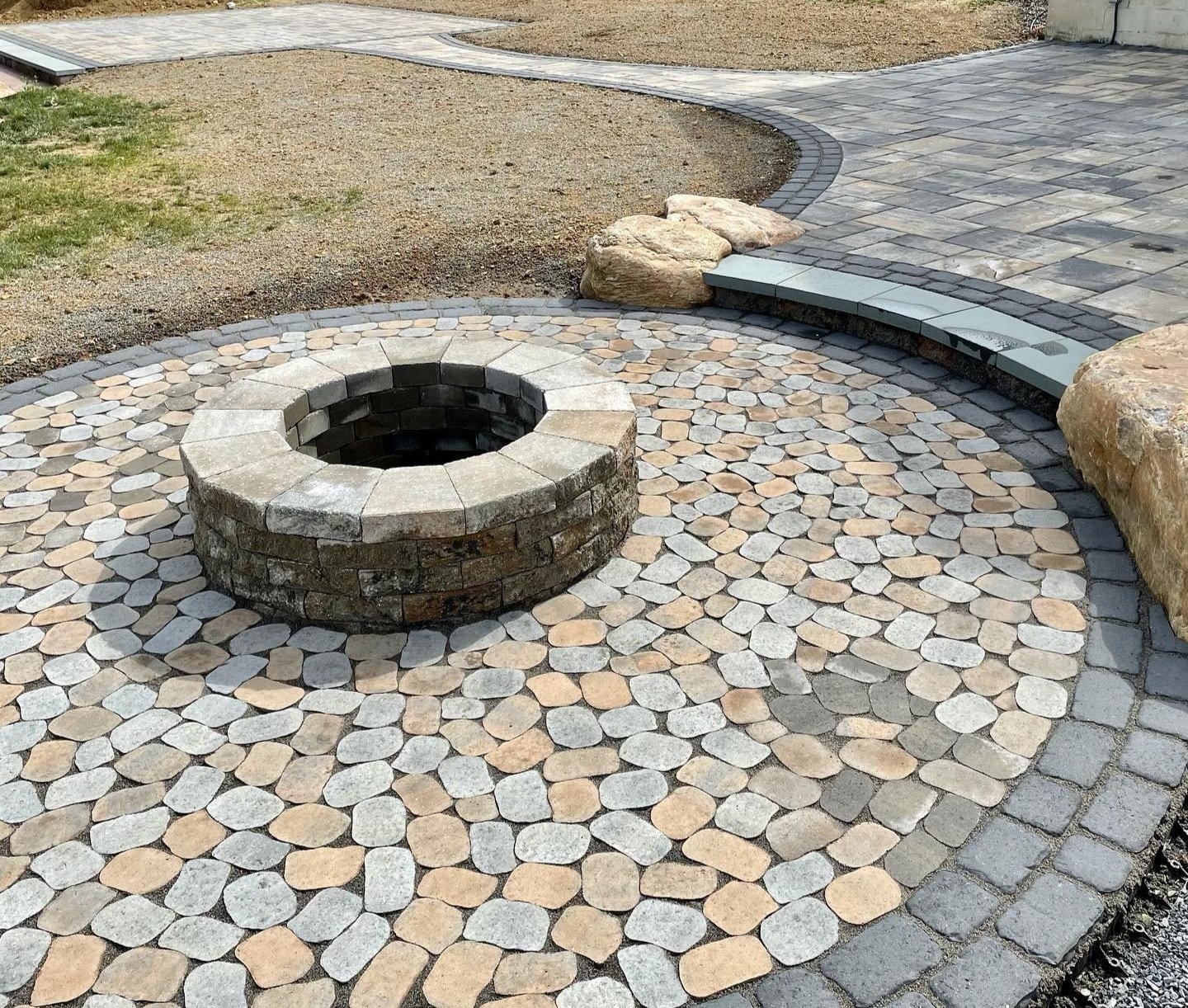Sitting around a fire pit with friends and loved ones is probably one of the greatest pastimes and it can be even more special in the comfort of your backyard. Landscape designers have created some incredible examples of fire pits that have become cornerstones of outstanding outdoor living spaces. A fire pit can be more than a gathering spot: it can be a work of art. Here’s how a landscape designer can create the perfect fire pit in Blandon, PA.
A landscape designer will consider a lot of factors in designing a fire pit that’s right for your needs and aesthetics.
The Perfect Location
Where you place your fire pit has lots of bearing on the success of the space. If you prefer to make your fire pit the center of the party, your landscape designer will incorporate a fire pit in either the vicinity of your patio or directly within it. If you want your fire pit to be a place of solitude, a landscape designer will place it further away from the patio in a more secluded corner of your backyard.
Choice of Fuel
The choice of fuel comes down to personal preference. The two fuels used in fire pits are wood or natural gas and there are huge differences between the two.
Wood is the classic, giving your fire pit a campfire feel, which is ideal for anyone who loves to tend the fire. The downsides to a wood fire pit include the need for firewood; smoke; and ash. The organic nature of wood means that this fire pit has varying levels of intensity. You can cook some delicious foods over a wood fire.
Natural gas creates consistent and reliable heat. It’s easily adjustable with a switch, knob, or even a smartphone app. Natural gas doesn’t create any smoke or ash though you won’t enjoy the authentic wood-fire crackle and aroma. Natural gas fire pits are typically decorative, meaning you can’t cook on them because food drippings are very difficult to remove from fire glass or lava rock.
Depending on your aesthetics, fuel preferences, and needs, your landscape designer will design a fire pit that delivers the ambience you’re looking for.
The Shape and Size
Fire pits are typically circular or square, though they can also be rectangular. If the intent is for people to gather around, a classic, rustic round fire pit is best since everyone can share equally in the warmth.
Square fire pits may be a good design choice to complement a modern home’s aesthetics, though anyone sitting at the corners will have a chillier experience than someone sitting along one of its broad sides.
Rectangular fire pits are very elegant structures typically intended for large spaces where a bonfire effect is not desirable. They are often gas-fueled to ensure consistent flames along the entire length. This shape would allow a very large group to enjoy the fire.
Masonry Choices
Fire pits often become prominent masonry features in the backyard. Since you’ll expect plenty of friends and family to spend time around the fire pit, you’ll want a masonry structure that showcases its beauty while integrating into the design scheme of the surrounding landscape and home.
Landscape designers will choose the masonry materials that complement the look of your backyard. In some cases, a fire pit is intended to be a stand-alone focal point that uses materials completely different from what’s around it. This bold approach is perfect if you want a fire pit to take center stage.
Related: Wow Your Guests With These 5 Fire Pit Design Ideas in Allentown and Lebanon, PA


